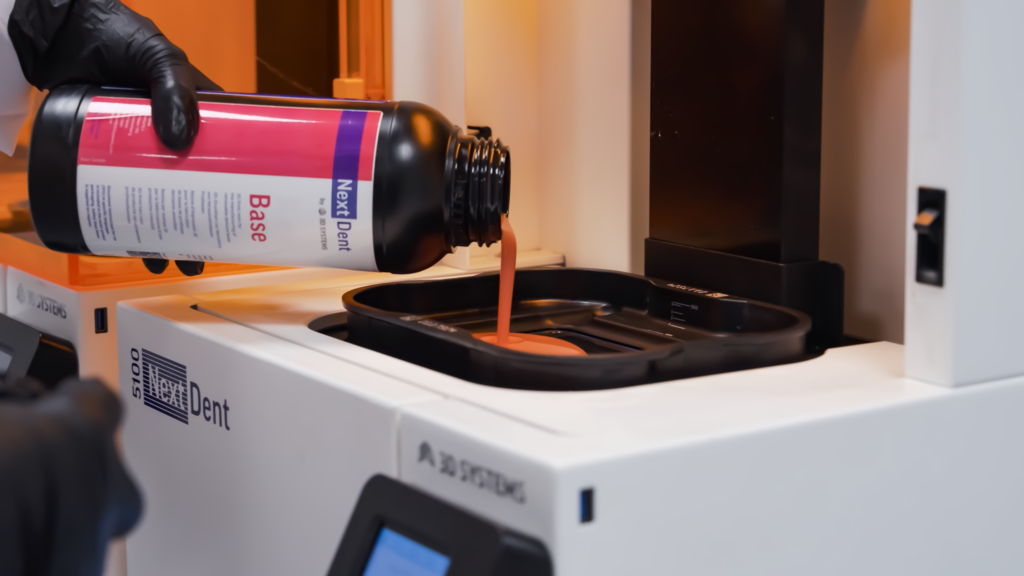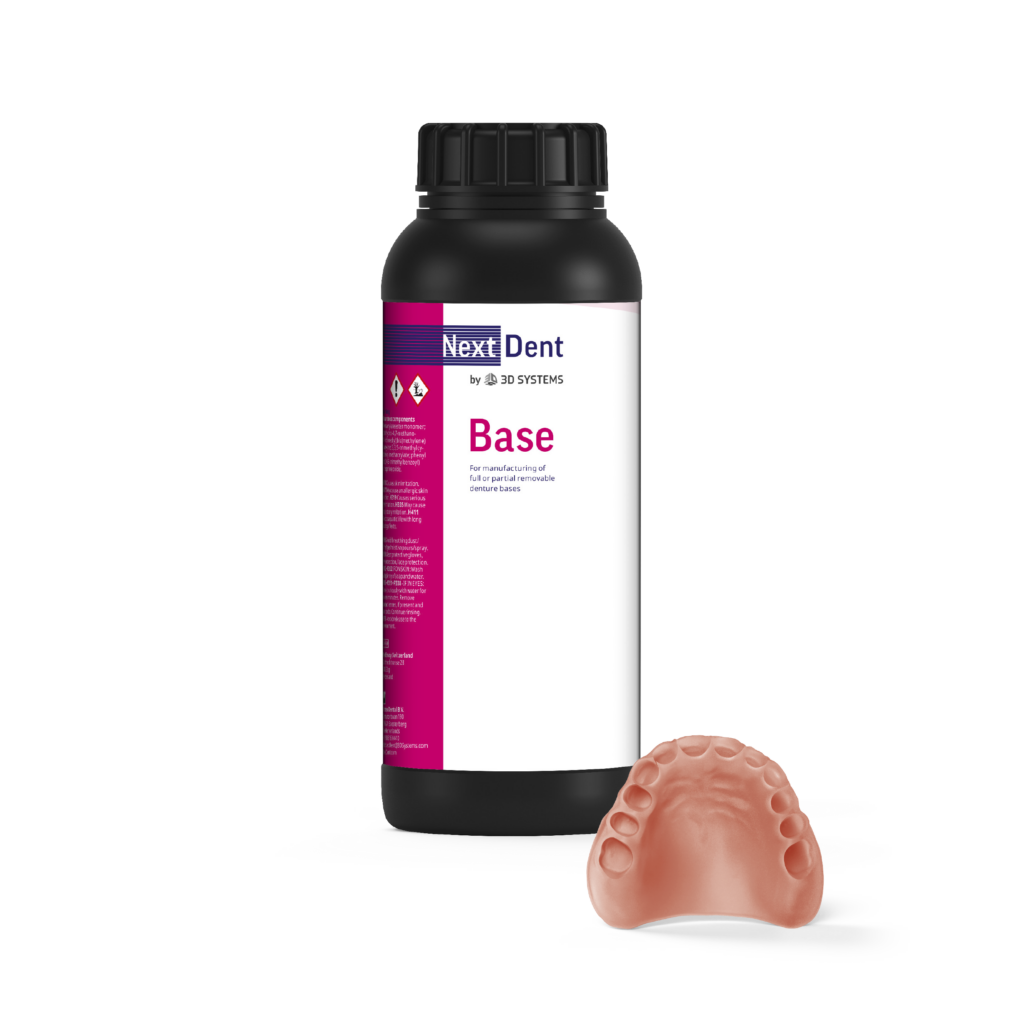3D Systems (NYSE: DDD) has announced a significant addition to its dental 3D printing offerings with the FDA 510(k) clearance of its NextDent Base material. The news represents an important step for the company in an already competitive and lucrative segment of the additive manufacturing (AM) industry.
NextDent Base is a third-generation product from 3D Systems that offers notable improvements in the manufacturing of denture bases. Approved by Health Canada and with CE marking 1639, this material is designed for the production of both full and partial removable dentures. Its properties, including high break resistance and precise, repeatable printability, are said to make it an effective alternative to traditional denture materials.
Available in four gingiva shades, NextDent Base is meant to match natural aesthetics, aiming to provide a more realistic appearance in dental prosthetics. It is the latest of 30 NextDent resins, said to be the largest number range available from any dental 3D printing material supplier, according to 3D Systems.
Steven Campbell, RDT FCGDent, with Nexus Dental Laboratory in the U.K. said the following of his trial tests with the resin, “This new material is truly amazing! No support bar across the heels, lovely delicate supports which are easy to remove, and the fit of the teeth to denture and denture to bar show just how stable this is. We have just started trials with it, but already I can see the strength of this is going to make it an incredible material to keep an eye on. We are so confident in the strength we see on early prints that we are going to run some test partials with it.”
Dr. Kunal Lal, of LAL Dental in New York, noted, “I really enjoyed testing the NextDent Base material. It is pink, flexible in thinner sections, and can be used for same-day interim RPD fabrication. Some of the other properties worth noting are minimal mixing, cleaning of residual material on the surface is easier, and improved strength.”
The Growing Dental 3D Printing Market
According to the “3D Printing In Dentistry 2023” report from Additive Manufacturing Research (“AMR”, formerly SmarTech Analysis), the dental 3D printing market has been significantly driven by the clear aligner segment in recent years, but is expected to see a shift towards restorative dentistry and in-office printing, with a particular focus on the application of dentures.
In addition to 3D Systems, Desktop Health and DENTCA, among others, also have FDA-approved resins for 3D printing denture bases. However, the most potentially disruptive product comes from 3D Systems’ leading competitor, Stratasys, which unveiled a technology capable of 3D printing not just denture bases, but complete, full-color dentures in a single job.
Nevertheless, according to the AMR report, 3D Systems controls about ten percent of the overall dental hardware market. It also has one of the widest product portfolios in the dental 3D printing market, ranging from wax casting printers to metal powder bed fusion systems and vat photopolymerization.
However, the recent acquisition of Cubicure by Align Technologies, the leading player in clear aligners, will likely introduce new dynamics in the dental 3D printing industry. It suggests a possible move toward directly manufactured clear aligners, rather than continuing the time-honored method of thermoforming them on 3D printed molds. Because the Israeli dental giant is one of 3D Systems’ largest customers, it caused some concern among investors as to 3D Systems’ overall business.
In light of this, the FDA clearance for NextDent Base demonstrates 3D Systems’ ongoing efforts to diversify its offerings and strengthen its position in the dental 3D printing market. This move can be seen as a strategic effort to reduce dependence on any single customer, such as Align Technologies, and to expand its market reach.
The news comes just after 3D Systems published its Q3 financial report, which indicated mixed financial performance with a revenue decline in Q3 2023, primarily due to difficulties in the dental orthodontics markets and new production printer sales. The company attributed this decline to macroeconomic and geopolitical uncertainties, affecting customer capital spending. The FDA clearance for the new material could be seen as a strategic effort to offset challenges in other areas and capitalize on growth opportunities in dental 3D printing.
Subscribe to Our Email Newsletter
Stay up-to-date on all the latest news from the 3D printing industry and receive information and offers from third party vendors.
You May Also Like
3D Printing Unpeeled: Wind Turbines, Probiotics and Lenses
TPI Composites, ORNL and Ingersoll Rand are working to make wind turbine tooling segments that can be 18.3 meters long. These elements also include resistive wires that help keep the...
3D Printing Unpeeled: Digital FDM Filament for Functional Gradients
Just published in Nature, a paper by a Seoul National University team looks at “3D printing with a 3D printed digital material filament for programming functional gradients.” Sang-Joon Ahn, Howon...
3D Printing Unpeeled: $5000 Cold Spray 3D Printer, Roland DGA & Living Materials
The AeroForge is a $5000 cold spray metal printer for copper made by a student team at Rice University. In a paper for ACS Central Science a team from Nanjing...
3D Printing Webinar and Event Roundup: April 28, 2024
In this week’s 3D Printing Webinar and Event Roundup, the Ceramics Expo is taking place in Michigan, Stratasys continues its advanced training courses, and SPE is holding a Polymer Characterization...

































